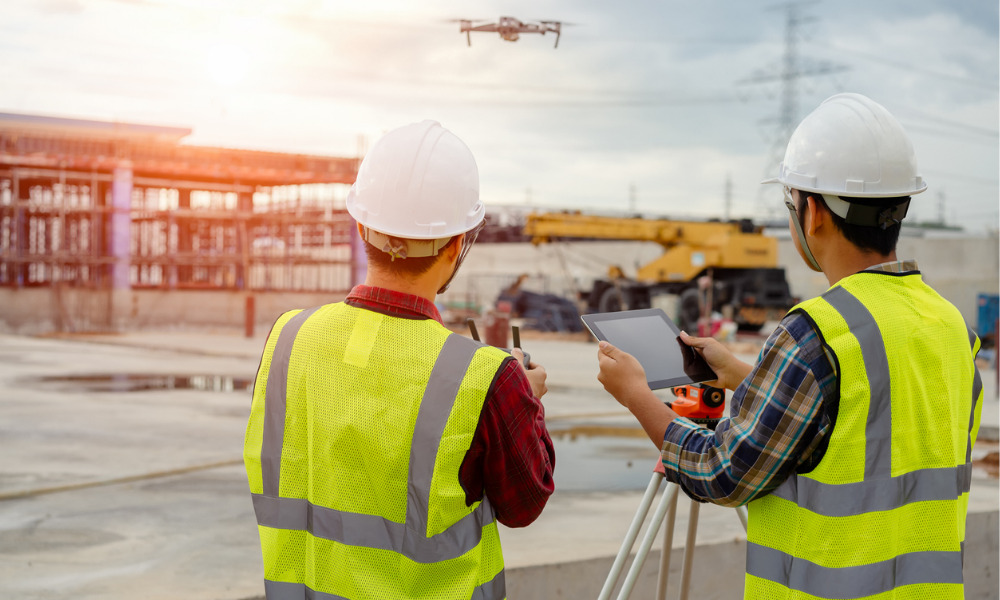Can drones improve worker safety?
SOURCE: THESAFETYMAG.COM
MAR 25, 2022

With tech solutions becoming increasingly prevalent in protecting workers, some employers are looking at using drone technology or unmanned aerial vehicles (UAVs) to further enhance worker safety and strengthen their safety programs. While some may see drones as a gimmick, they could have genuine benefits for workers.
Writing for Commercial UAV News, Rae Steinbach says that they could come in handy with regards to reducing exposure to hazardous substances and radiation. Indeed, workers in a number of settings are exposed to a range of substances that are potential (and proven) hazards. Drones could be a way of reducing these exposures for workers.
“As an example, you can look at how drones were used after the disaster at the Fukushima Daiichi Nuclear Power Plant. In this case, drones collected information that was vital to managing the disaster. With high radiation levels, this task would have been too dangerous for humans, but the drones made it possible for people to observe from a safe distance as the necessary information was collected,” says Steinbach.
And, in fact, aside from exposures drones could be an interesting way for employers to reduce hazardous activities across the board – by using drones rather that workers to get up close and person with a variety of workplace risks that may be tied to activities such as monitoring, inspections and maintenance.
“Visual inspections of wind turbines, for example, put people hundreds of feet in the air. Inspection personnel are suspended with ropes as they methodically search for defects in the rotor, nacelle, tower, foundation, and electrical system of each wind turbine.
During the entire process, people are in danger of falling. Drones, on the other hand, can complete much of the inspection process without ever placing people in danger. Additionally, the versatility of payload options can allow for much more detailed data collection during the process,” writes David Daly for Consortiq.
Drones can reach heights or nooks and crannies that are harder to reach for workers – and by using drones, employers can reduce unnecessary risks for their workers.
In a similar vein, drones could also be used to transport materials, equipment and tools to a job site, or from site to site. This would reduce the need for workers to carry potentially very heavy equipment that could result in injuries such as musculoskeletal disorders (MSDs).
Drones can also be used as a means to collect valuable data which can be used to mitigate serious safety risks. The National Safety Council (NSC) says that “technology for gathering data using drones has undergone significant advances in recent years. Drones now often come equipped with 3D cameras, thermal imaging cameras, artificial intelligence, light detection and ranging (LiDAR) and 4K cameras with advanced sensors.”
The NSC says that in addition, drones can include a variety of sensors and transducers use electronic gravitational, thermal, mechanical, electromagnetic and chemical capabilities, among others, to sense measures including gas leaks and atmospheric pressures.
Drones could also be valuable additions to disaster and emergency response teams, to complement the hard work that these teams already do and – as mentioned before – reduce unnecessary exposures to workers.
LATEST NEWS
Augmented Reality
Hi-tech smart glasses connecting rural and remote aged care residents to clinicians
NOV 20, 2023
WHAT'S TRENDING


Data Science
5 Imaginative Data Science Projects That Can Make Your Portfolio Stand Out
OCT 05, 2022

Coventry University expert explains what Amazon drone deliveries means for jobs and the price of a package
SOURCE: HTTPS://WWW.COVENTRYTELEGRAPH.NET/
NOV 02, 2023
This New Autonomous Drone for Cops Can Track You in the Dark
SOURCE: HTTPS://WWW.WIRED.COM/
SEP 26, 2023
Tamil Nadu government approves farm mechanisation subsidy for Garuda Aerospace drones
SOURCE: HTTPS://AGRICULTUREPOST.COM/
SEP 25, 2023
The Future Of Biomedical Transport: Drones At The Service Of Health
SOURCE: HTTPS://WWW.EMERGENCY-LIVE.COM/
AUG 25, 2023
Groundbreaking Drone Flights with Radiation Detection Pave the Way for Improved Safety on Nuclear Sites
SOURCE: HTTPS://DRONELIFE.COM/
AUG 11, 2023
Drone with sticky patches studies biodiversity by bumping into trees
SOURCE: HTTPS://WWW.NEWSCIENTIST.COM/
JUL 13, 2023




